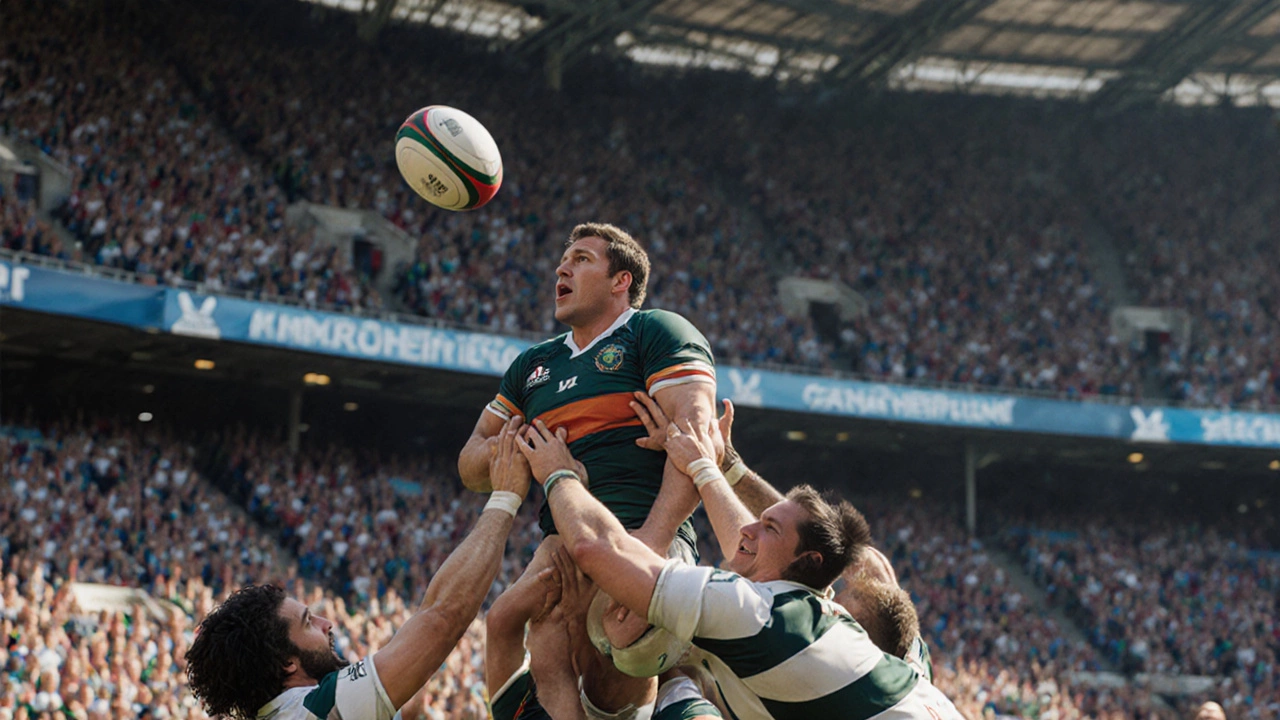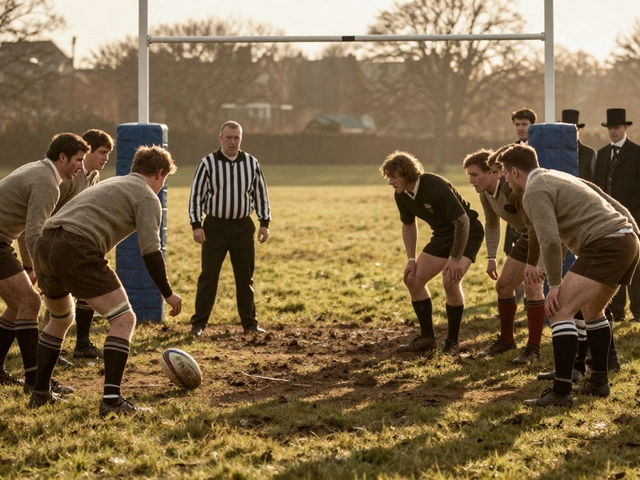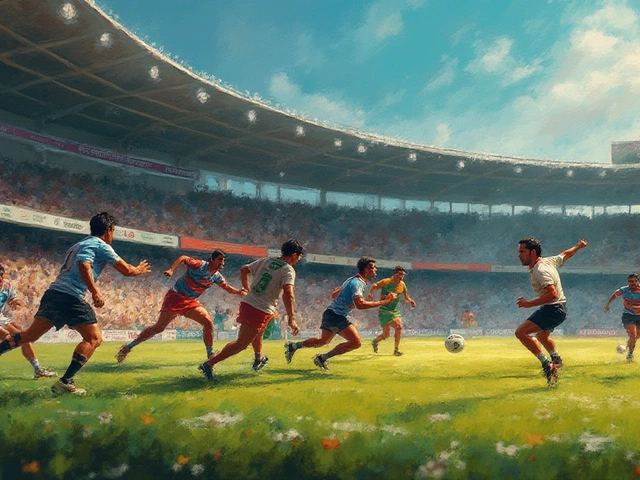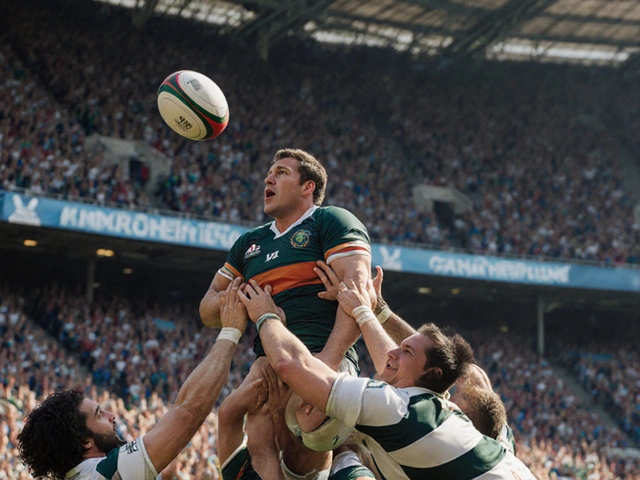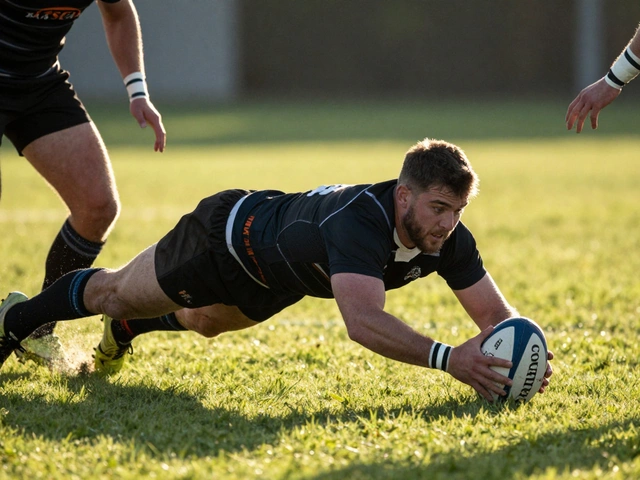Rugby Lineout Lift Rules Checker
Test Your Knowledge
Answer the following questions about rugby lineout lift rules according to World Rugby Law 18:
Ever watched a rugby match and wondered what that dramatic moment is when a teammate is hoisted high into the air to catch the ball? In rugby union it's called a lineout lift, a move that can turn a routine throw‑in into a game‑changing play. Below we break down exactly what a lineout lift is, how it works, the rules that govern it, and how players can train safely.
Key Takeaways
- A lift in rugby union is officially termed a lineout lift and is only used during lineouts.
- World Rugby’s law 18 outlines strict safety requirements for lifting, including who may lift and how high the jumper can be raised.
- Rugby league does not allow lineout lifts because the sport has no lineouts; lifting only occurs in specific tackle situations.
- Effective lifting relies on strength, timing, and clear communication between the jumper and the lifters.
- Proper training and adherence to safety protocols dramatically reduce injury risk.
What Is a Lineout Lift?
Lineout lift is a coordinated technique used in rugby union where two or three players raise a teammate (the jumper) to catch a thrown ball during a lineout. The move adds height, giving the jumper a better chance to secure possession and launch an attack.
How a Lineout Lift Works in Rugby Union
When the ball goes out of bounds, play restarts with a lineout. The forwards from each team form two parallel lines, and the hooker throws the ball straight down the middle. Here’s the step‑by‑step flow:
- Call the move. The team’s lineout caller signals the intended jump height and the target receiver.
- Position the lifters. Typically two or three players bind tightly behind the jumper, placing one arm under the jumper’s armpits and the other around the opposite thigh.
- Lift timing. As the ball is released, lifters straighten their legs and powerfully extend, raising the jumper vertically.
- Catch and secure. The jumper times the leap to meet the ball at the apex, grabs it, and either passes it out or drives forward.
- Return safely. Lifters lower the jumper smoothly, ensuring the knees stay aligned to avoid twists.
Each component demands precise coordination; a mis‑timed lift can easily lead to a dropped ball or injury.
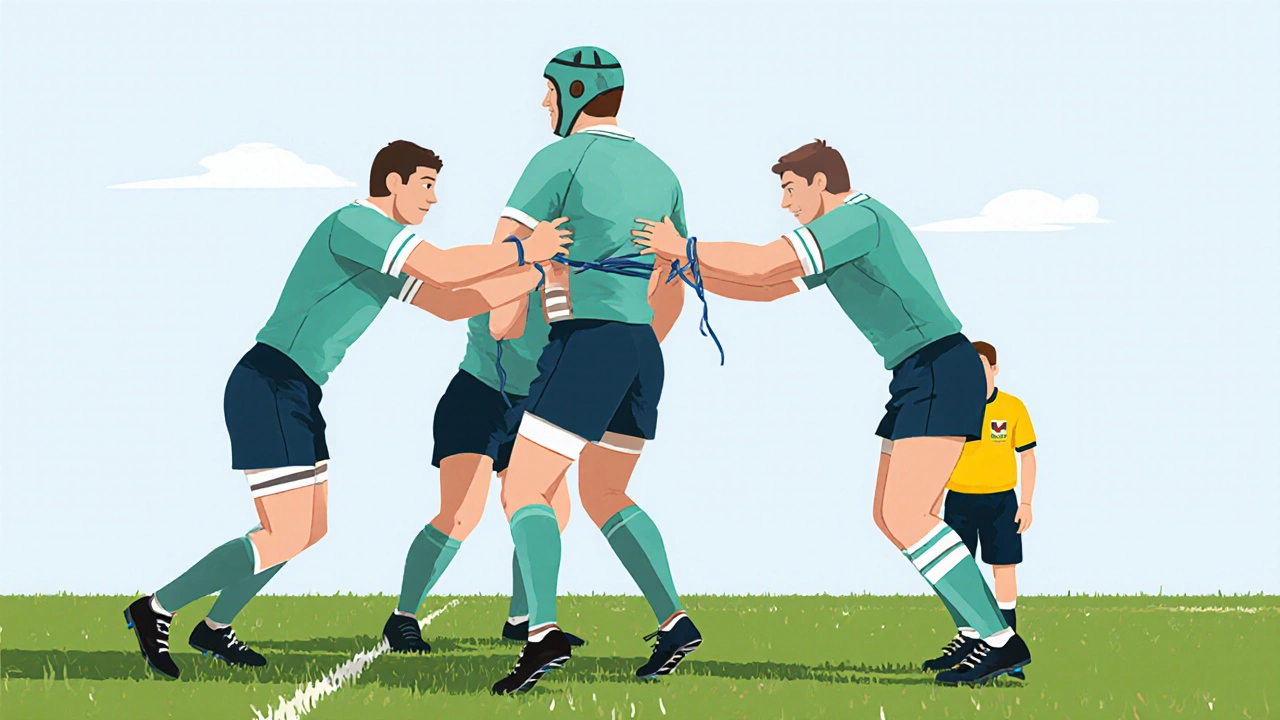
World Rugby’s Safety Rules for Lifting
World Rugby is the global governing body that sets the official laws for rugby union. Law 18 (Lineout) contains specific clauses about lifting:
- Only the designated lifters may lift; other players must stay clear.
- Lifters must keep their backs straight and lift with their legs, never with the torso.
- The jumper’s head must be protected; no forward or backward bending is allowed while airborne.
- If a player lands on an opponent’s head or neck, the referee must stop play and may award a penalty.
- Maximum lift height is not explicitly limited, but the jumper must be able to land safely within the lineout area.
These rules exist to minimise the risk of neck and shoulder injuries, which are the most common concerns in lifting scenarios.
Why Lifting Doesn’t Exist in Rugby League
Rugby league is a separate code of rugby that does not feature lineouts; instead, play restarts with a scrum or a tap. Because there is no lineout, the specific "lineout lift" is absent. However, lifting does appear in limited tackle situations, such as a defender attempting to lift an opponent to prevent a forward pass. Those lifts are subject to different safety guidelines and are less dramatic than union lifts.
Common Mistakes and How to Avoid Injuries
Even seasoned players can slip up. Here are the top errors and corrective tips:
- Leaning too far forward. Keep the spine neutral; train with dead‑lift form to build proper posture.
- Uneven grip. Bind both arms at the same height and lock elbows to create a stable platform for the jumper.
- Mis‑timed lift. Practice synchronized counting (e.g., "one, two, three, lift") during drills.
- Lack of communication. Use clear verbal cues like "ready", "lift", and "down".
- Insufficient strength. Strength‑training programs focusing on squats, power cleans, and core stability dramatically improve lift performance.
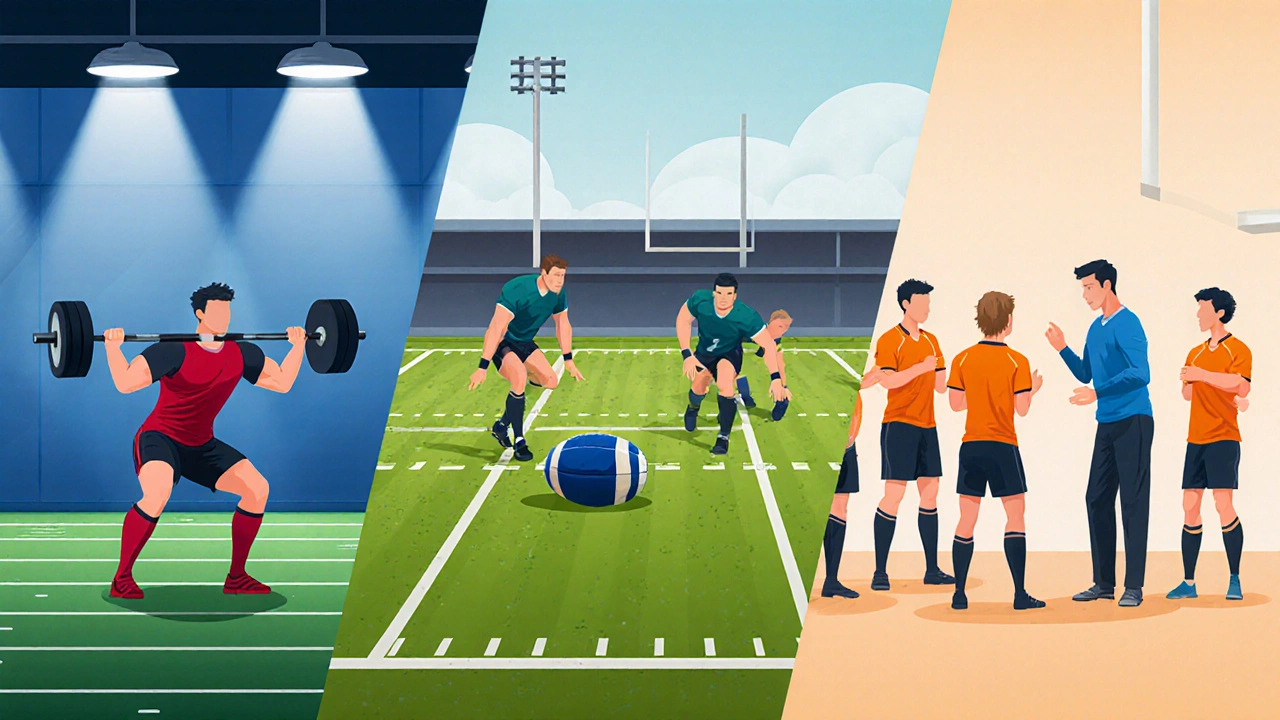
Training Tips for an Effective Lineout Lift
Building a reliable lift routine involves three pillars: strength, technique, and teamwork.
- Strength foundation. Incorporate compound lifts (squats, deadlifts) 2‑3 times a week. Aim for 5‑8 reps at 80% of 1RM to develop power.
- Specific lift drills. Use a sled or weighted dummy to simulate the jumper’s mass. Practice the lift‑up, hold, and lower phases repeatedly.
- Footwork and positioning. Lifters should practice the exact distance from the lineout mark, ensuring they’re not too far back or forward.
- Communication drills. Run lineout scenarios where the caller changes the jump height at the last second; lifters must adapt instantly.
- Recovery. Stretch the hamstrings, hip flexors, and shoulders after each session to maintain mobility and prevent strains.
Integrating these drills into weekly training makes the lift feel almost automatic on match day.
Quick Comparison: Union vs. League Lineout/Lift Rules
| Aspect | Rugby Union | Rugby League |
|---|---|---|
| Presence of lineout | Yes - restart after ball goes out of bounds | No - restart with scrum or tap |
| Lift allowed | Yes - up to 3 lifters per jumper (Law 18) | Rare - only in specific tackle situations |
| Primary governing law | World Rugby Law 18 | International Rugby League (IRL) Laws |
| Safety focus | Strict binding and head‑protection rules | General tackle safety, no specific lift rules |
| Typical use | Gain height for ball possession and quick attack | Maintain momentum in a tackle or prevent off‑side |
Frequently Asked Questions
What is the official term for lifting a player in a rugby lineout?
The move is officially called a lineout lift. It’s used only in rugby union during a lineout to give the jumper extra height.
How many players can lift a jumper at once?
World Rugby allows up to three lifters per jumper, though most teams use two for better stability and speed.
Are lifts allowed in rugby league?
No, rugby league does not have lineouts, so the specific "lineout lift" is not part of the game. Lifting only appears in limited tackle contexts.
What safety gear should lifters and jumpers wear?
Players typically wear standard rugby equipment - a mouthguard, scrum cap (optional), and properly fitted shoulder pads. The key is proper technique rather than extra gear.
Can a lifted jumper be tackled while airborne?
The opposing team may try to disrupt the lineout, but they cannot legally tackle a player until they are on the ground. Any contact before that is a penalty.
